Deep Learning Based Antenna Selection for MIMO SDR System †
Abstract
1. Introduction
2. The Implementation of DLBAS-Aided MIMO SDR System
2.1. The Structure of Deep Learning Decision Server
2.1.1. Deep Learning Decision Module
2.1.2. Logic/Data Processing Module
2.1.3. Data Communication Module
2.2. The Design of Dataset and Neural Network for Antenna Selection
2.2.1. The Generation of Dataset
| Algorithm 1 Dataset acquisition process |
| 1: repeat |
| 2: Convert the estimated CSI matrix to a real-value vector as
|
| 3: Obtain the optimal antenna subset by NBAS. The antenna subset is replaced by the label |
| , where and denotes the number of selected receive antennas. |
| 4: Convert the label l to one-hot vector z. |
| 5: until All samples are generated |
2.2.2. The Design of Neural Network
2.2.3. The Implementation of Deep Learning Decision Server
3. Experiment Results and Analysis
3.1. The Performance of DNN Model
3.2. Results of DLBAS
4. Conclusions
Author Contributions
Funding
Conflicts of Interest
References
- Wang, C.; Haider, F.; Gao, X.; Yang, Y.; Yuan, D.; Aggoune, H.M.; Haas, H.; Fletcher, S.; Hepsaydir, E. Cellular architecture and key technologies for 5G wireless communication networks. IEEE Commun. Mag. 2014, 52, 122–130. [Google Scholar] [CrossRef]
- Thompson, J.; Ge, X.; Wu, H.; Irmer, R.; Jiang, H.; Fettweis, G.; Alamouti, S. 5G wireless communication systems: Prospects and challenges [Guest Editorial]. IEEE Commun. Mag. 2014, 52, 62–64. [Google Scholar] [CrossRef]
- Basar, R. Reconfigurable Intelligent Surface-Based Index Modulation: A New Beyond MIMO Paradigm for 6G. IEEE Trans. Commun. 2020, 68, 3187–3196. [Google Scholar] [CrossRef]
- Hussein, H.S.; Hussein, S.; Mohamed, E.M. Efficient channel estimation techniques for MIMO systems with 1-bit ADC. China Commun. 2020, 17, 50–64. [Google Scholar] [CrossRef]
- Nitsu, T.; Nakabayashi, H. A Study of User Capacity for Massive MIMO in Urban Street Canyon Environment. In Proceedings of the 2018 IEEE International Workshop on Electromagnetics: Applications and Student Innovation Competition (iWEM), Nagoya, Japan, 29–31 August 2018; pp. 1–2. [Google Scholar] [CrossRef]
- Liu, X.; Huang, T.; Shlezinger, N.; Liu, Y.; Zhou, J.; Eldar, Y.C. Joint Transmit Beamforming for Multiuser MIMO Communications and MIMO Radar. IEEE Trans. Signal Process. 2020, 68, 3929–3944. [Google Scholar] [CrossRef]
- Gao, Y.; Vinck, H.; Kaiser, T. Massive MIMO Antenna Selection: Switching Architectures, Capacity Bounds, and Optimal Antenna Selection Algorithms. IEEE Trans. Signal Process. 2018, 66, 1346–1360. [Google Scholar] [CrossRef]
- Takemura, N.; Honma, N.; Kawagoe, A. Improvement of Interference Suppression Performance Using Antenna Selection of Mobile Terminal for Full-Duplex 4×4 MIMO System. IEEE Trans. Antennas Propag. 2020, 17, 4186–4195. [Google Scholar] [CrossRef]
- Ibrahim, M.S.; Konar, A.; Sidiropoulos, N.D. Fast Algorithms for Joint Multicast Beamforming and Antenna Selection in Massive MIMO. IEEE Trans. Signal Process. 2020, 68, 1897–1909. [Google Scholar] [CrossRef]
- He, D.; Liu, C.; Quek, T.Q.S.; Wang, H. Transmit Antenna Selection in MIMO Wiretap Channels: A Machine Learning Approach. IEEE Wirel. Commun. Lett. 2018, 7, 634–637. [Google Scholar] [CrossRef]
- Joung, J. Machine learning-based antenna selection in wireless communications. IEEE Commun. Lett. 2016, 20, 2241–2244. [Google Scholar] [CrossRef]
- Liao, Y.; Yao, H.; Hua, Y.; Li, C. CSI Feedback Based on Deep Learning for Massive MIMO Systems. IEEE Access 2019, 7, 86810–86820. [Google Scholar] [CrossRef]
- Cai, J.X.; Zhong, R.; Li, Y. Antenna selection for multiple-input multiple-output systems based on deep convolutional neural networks. PLoS ONE 2019, 14, e0215672. [Google Scholar] [CrossRef] [PubMed]
- O’Shea, T.J.; Erpek, T.; Clancy, T.C. Deep Learning Based MIMO Communications. arXiv 2017, arXiv:1707.07980. [Google Scholar]
- Ma, X.; Gao, Z. Data-Driven Deep Learning to Design Pilot and Channel Estimator for Massive MIMO. IEEE Trans. Veh. Technol. 2020, 69, 5677–5682. [Google Scholar] [CrossRef]
- Elbir, A.M.; Mishra, K.V. Joint Antenna Selection and Hybrid Beamformer Design Using Unquantized and Quantized Deep Learning Networks. IEEE Trans. Wireless Commun. 2020, 19, 1677–1688. [Google Scholar] [CrossRef]
- Huang, H.; Song, Y.; Yang, J.; Gui, G.; Adachi, F. Deep-Learning-Based Millimeter-Wave Massive MIMO for Hybrid Precoding. IEEE Trans. Veh. Technol. 2019, 68, 3027–3032. [Google Scholar] [CrossRef]
- Alrabeiah, M.; Alkhateeb, A. Deep Learning for TDD and FDD Massive MIMO: Mapping Channels in Space and Frequency. In Proceedings of the 2019 53rd Asilomar Conference on Signals, Systems, and Computers, Pacific Grove, CA, USA, 3–6 November 2019; pp. 1465–1470. [Google Scholar] [CrossRef]
- Klautau, A.; Batista, P.; González-Prelcic, N.; Wang, Y.; Heath, R.W. 5G MIMO Data for Machine Learning: Application to Beam-Selection Using Deep Learning. In Proceedings of the 2018 Information Theory and Applications Workshop (ITA), San Diego, CA, USA, 11–16 February 2018; pp. 1–9. [Google Scholar] [CrossRef]
- An, W.; Zhang, P.; Xu, J.; Luo, H.; Huang, L.; Zhong, S. A Novel Machine Learning Aided Antenna Selection Scheme for MIMO Internet of Things. Sensors 2020, 20, 2250. [Google Scholar] [CrossRef]
- Arun Kumar, K.A. ARM-FPGA Implementation of a Partially Reconfigurable OFDM-MIMO Phy-Link. In Proceedings of the 2018 International CET Conference on Control, Communication, and Computing (IC4), Thiruvananthapuram, India, 5–7 July 2018; pp. 288–292. [Google Scholar] [CrossRef]
- Zhang, P.; Xu, J.; Zhong, S.; Feng, H.; Huang, L.; Yuan, T.; Zhang, J. Design of Reconfigurable SDR Platform for Antenna Selection Aided MIMO Communication System. IEEE Access 2019, 7, 169267–169280. [Google Scholar] [CrossRef]
- Zhong, S.; Feng, H.; Zhang, P.; Xu, J.; Huang, L.; Yuan, T.; Huo, Y. User Oriented Transmit Antenna Selection in Massive Multi-User MIMO SDR Systems. Sensors 2020, 20, 4867. [Google Scholar] [CrossRef]
- Luo, H.; Xu, J.; Zhang, J.; Zhang, P.; Huang, L. Deep Learning Based Antenna Selection Aided Space-Time Shift Keying Systems. In Proceedings of the 2019 International Conference on Artificial Intelligence and Computer Science (AICS 2019), New York, NY, USA, 12–13 July 2019; pp. 409–413. [Google Scholar] [CrossRef]
- Yang, P.; Xiao, Y.; Xiao, M.; Guan, Y.L.; Li, S.; Xiang, W. Adaptive Spatial Modulation MIMO Based on Machine Learning. IEEE J. Sel. Areas Commun. 2019, 37, 2117–2131. [Google Scholar] [CrossRef]
- Han, S.; Pool, J.; Tran, J.; Dally, W.J. Learning both Weights and Connections for Efficient Neural Networks. arXiv 2015, arXiv:1506.02626. [Google Scholar]
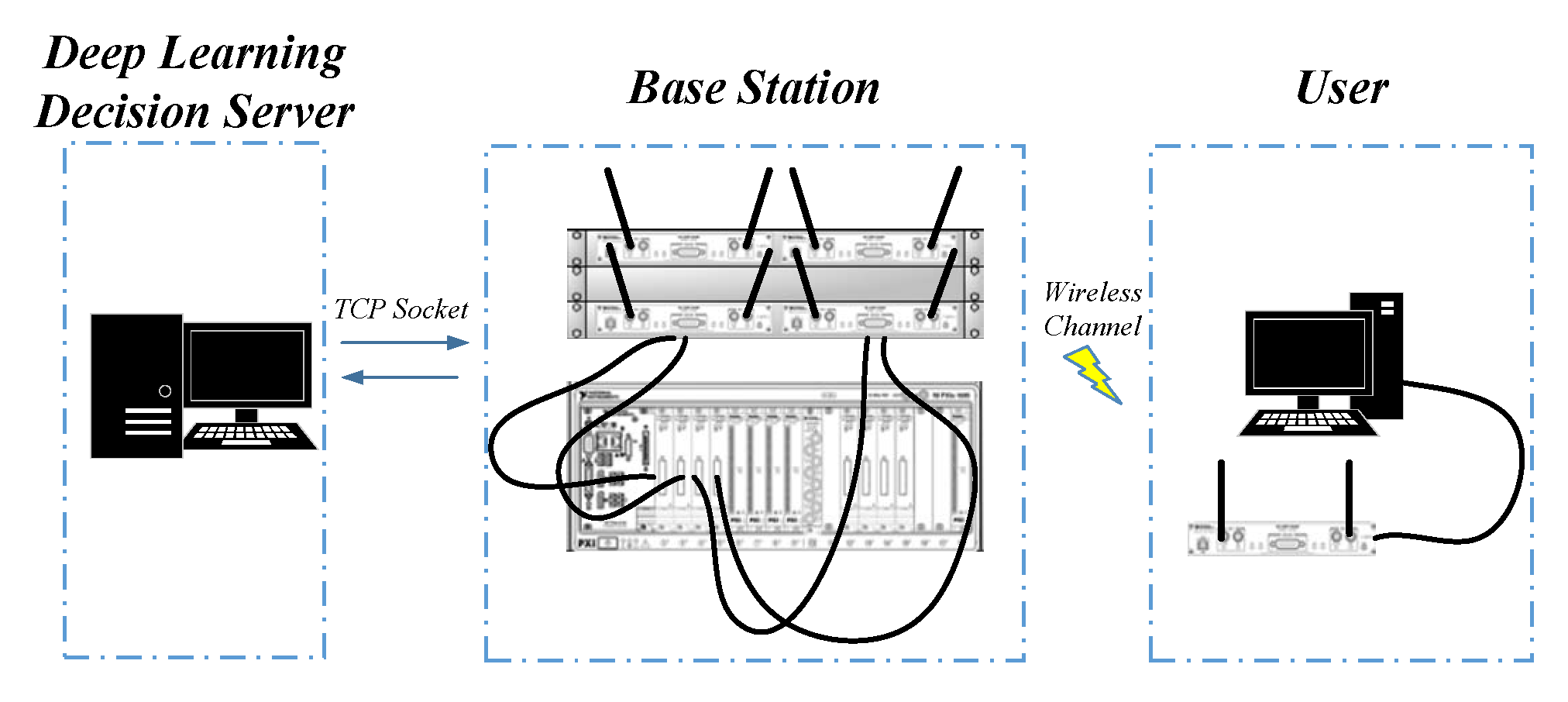

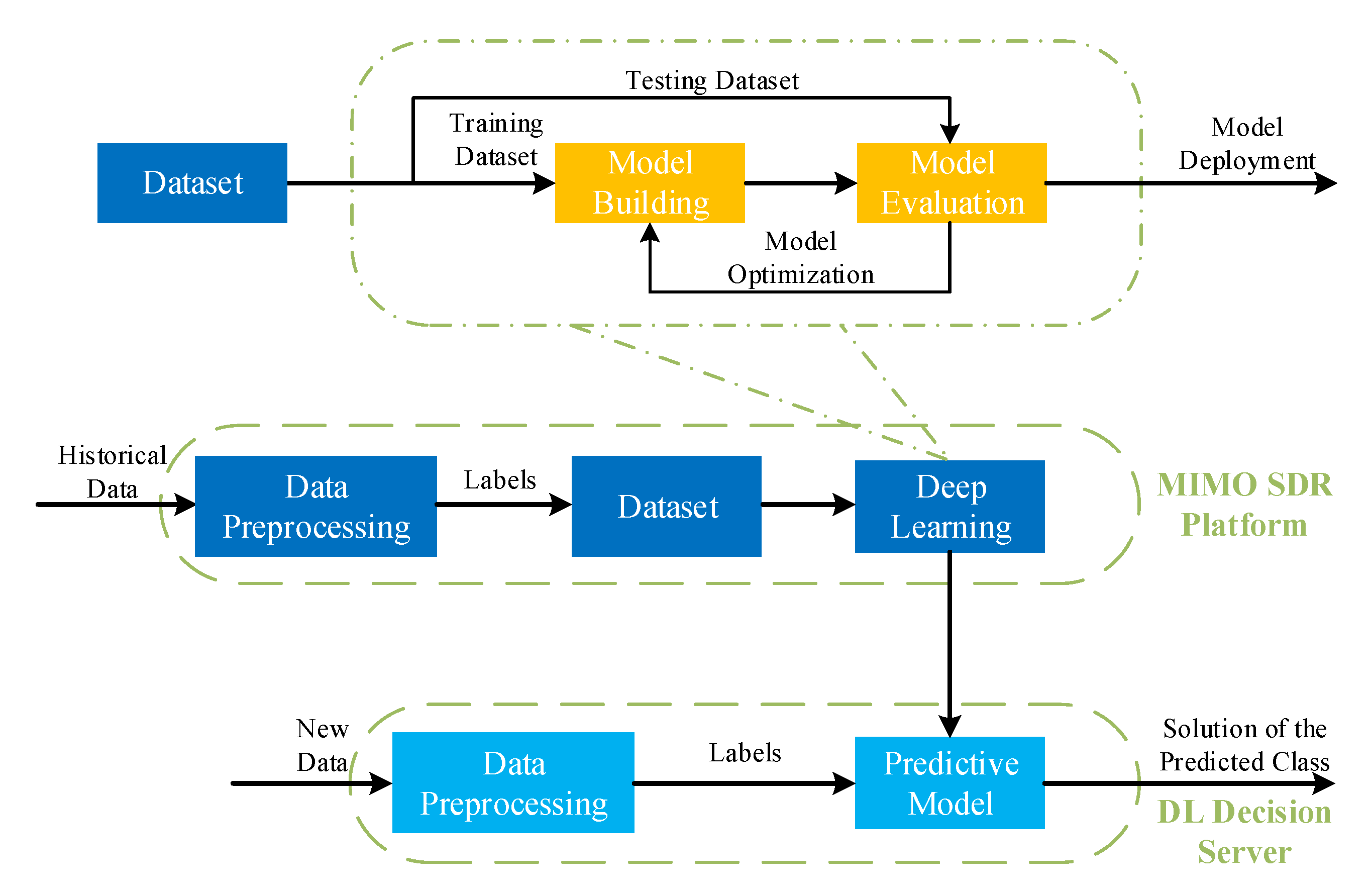
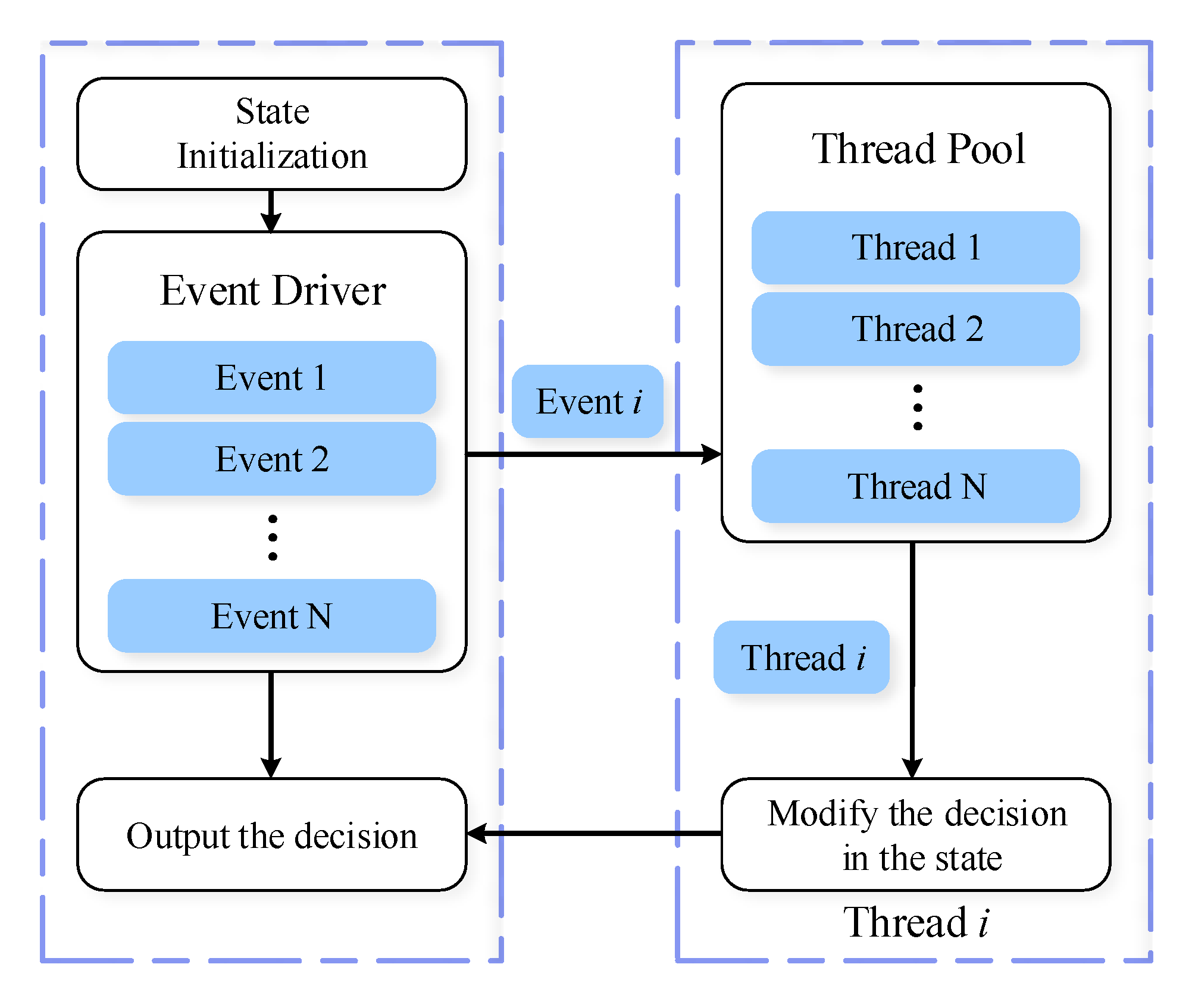
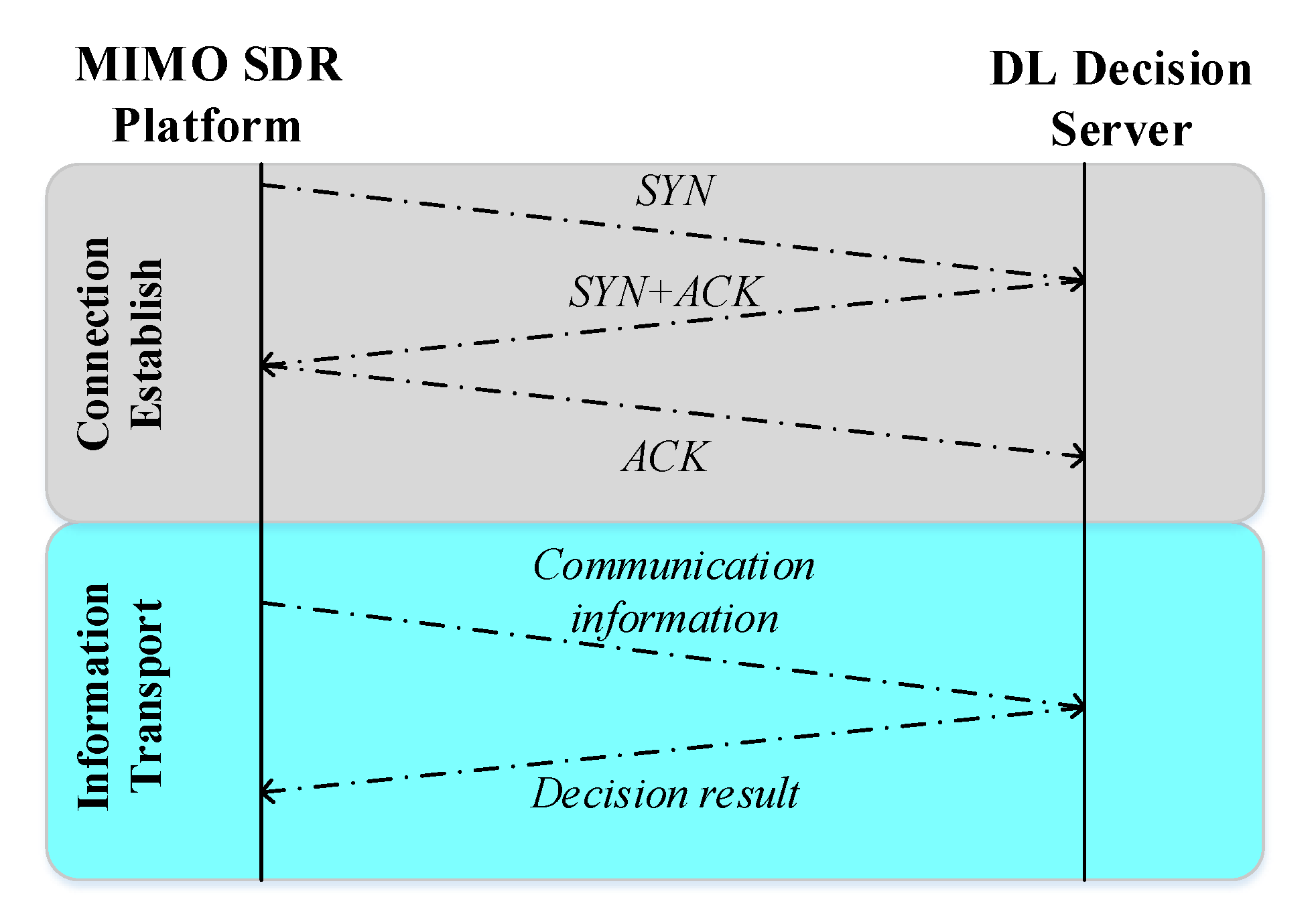
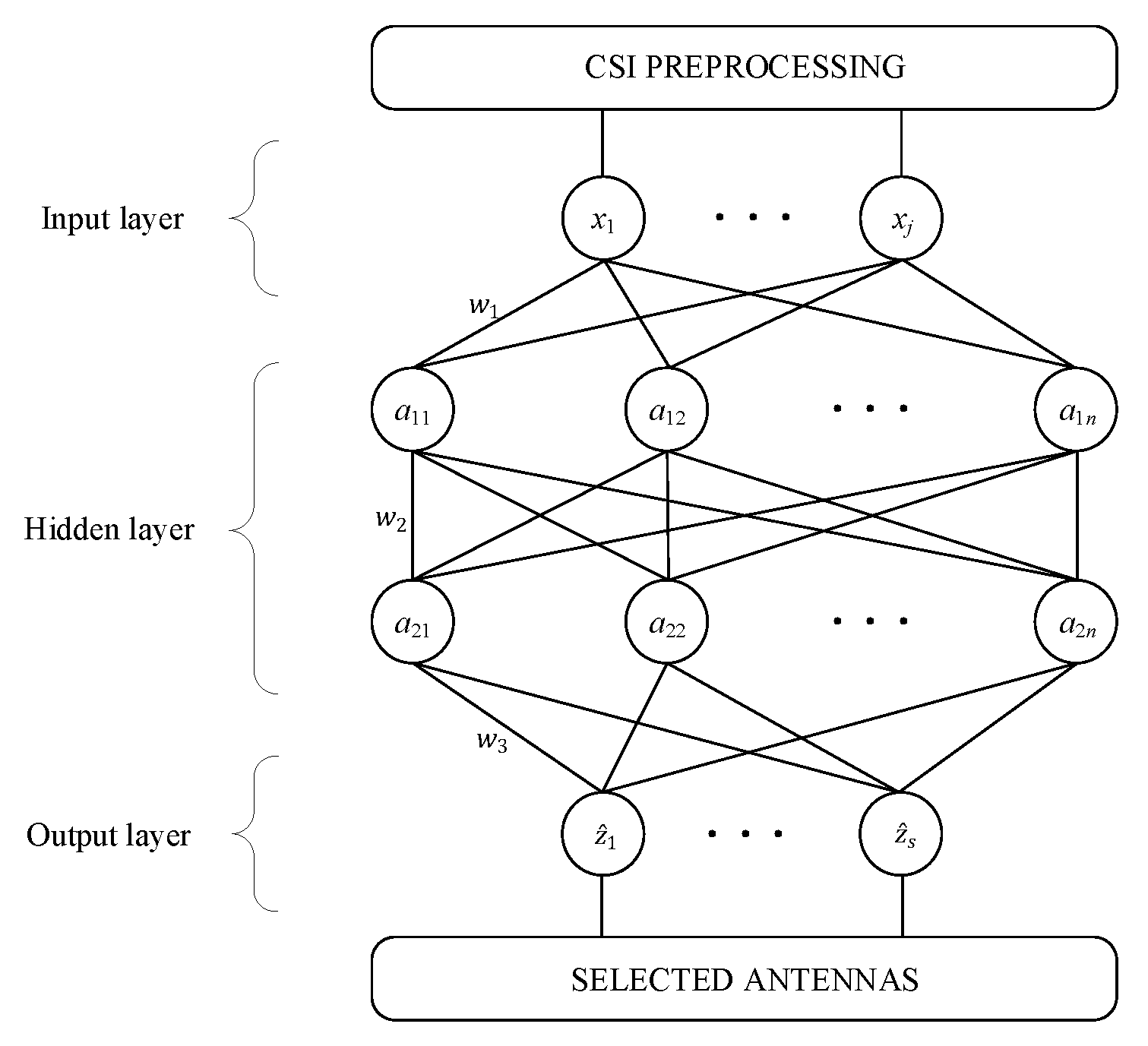

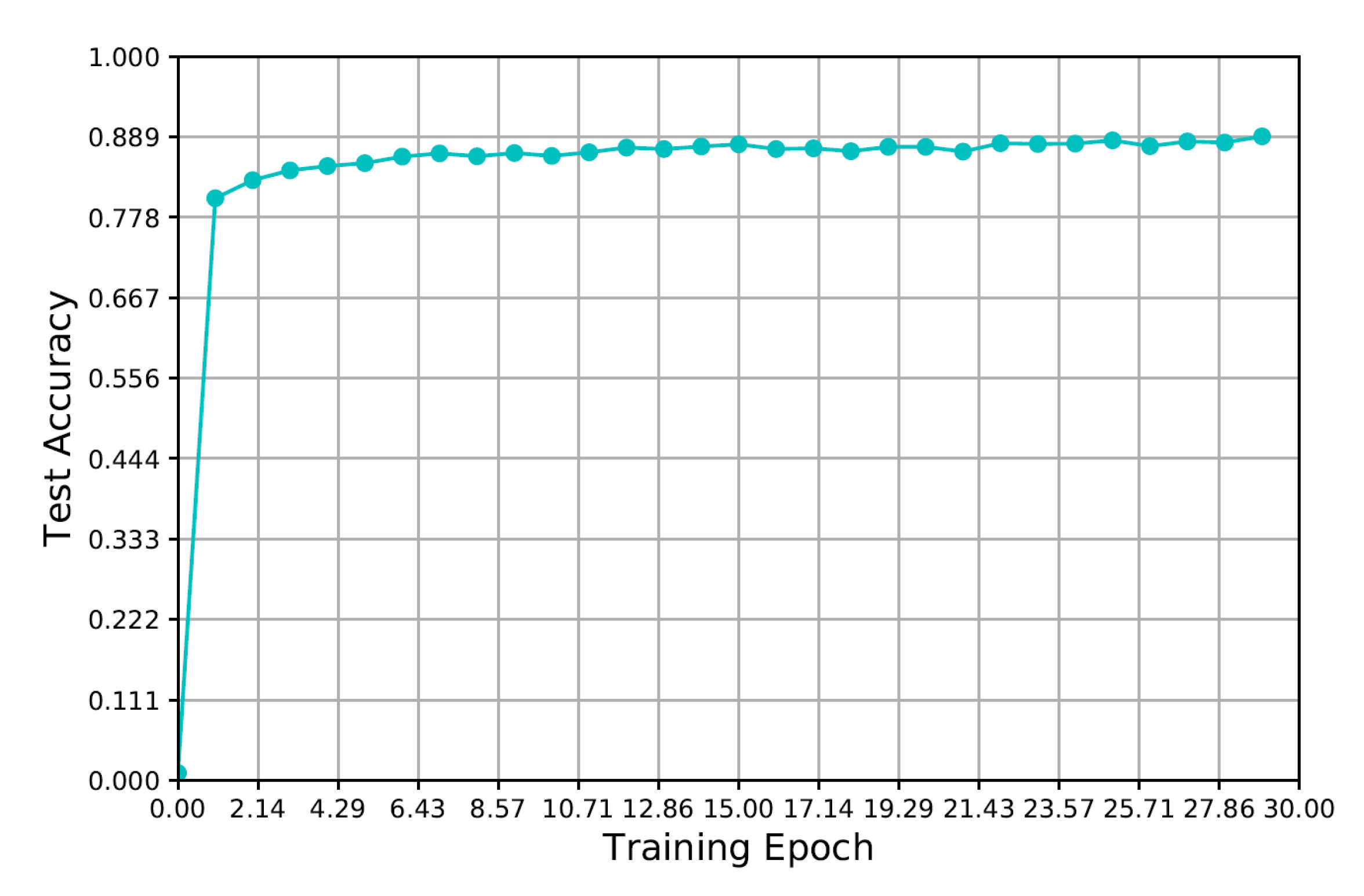
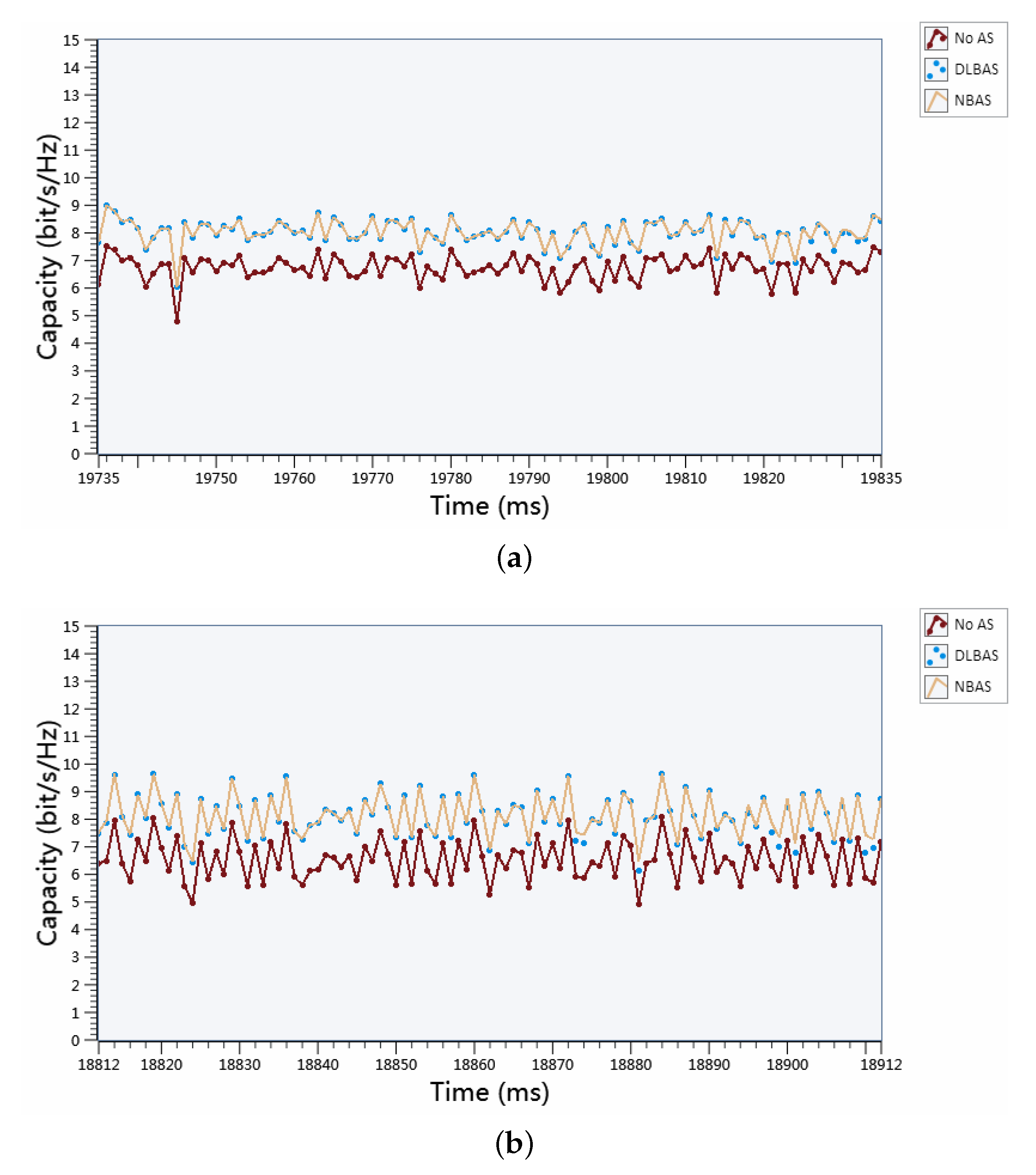
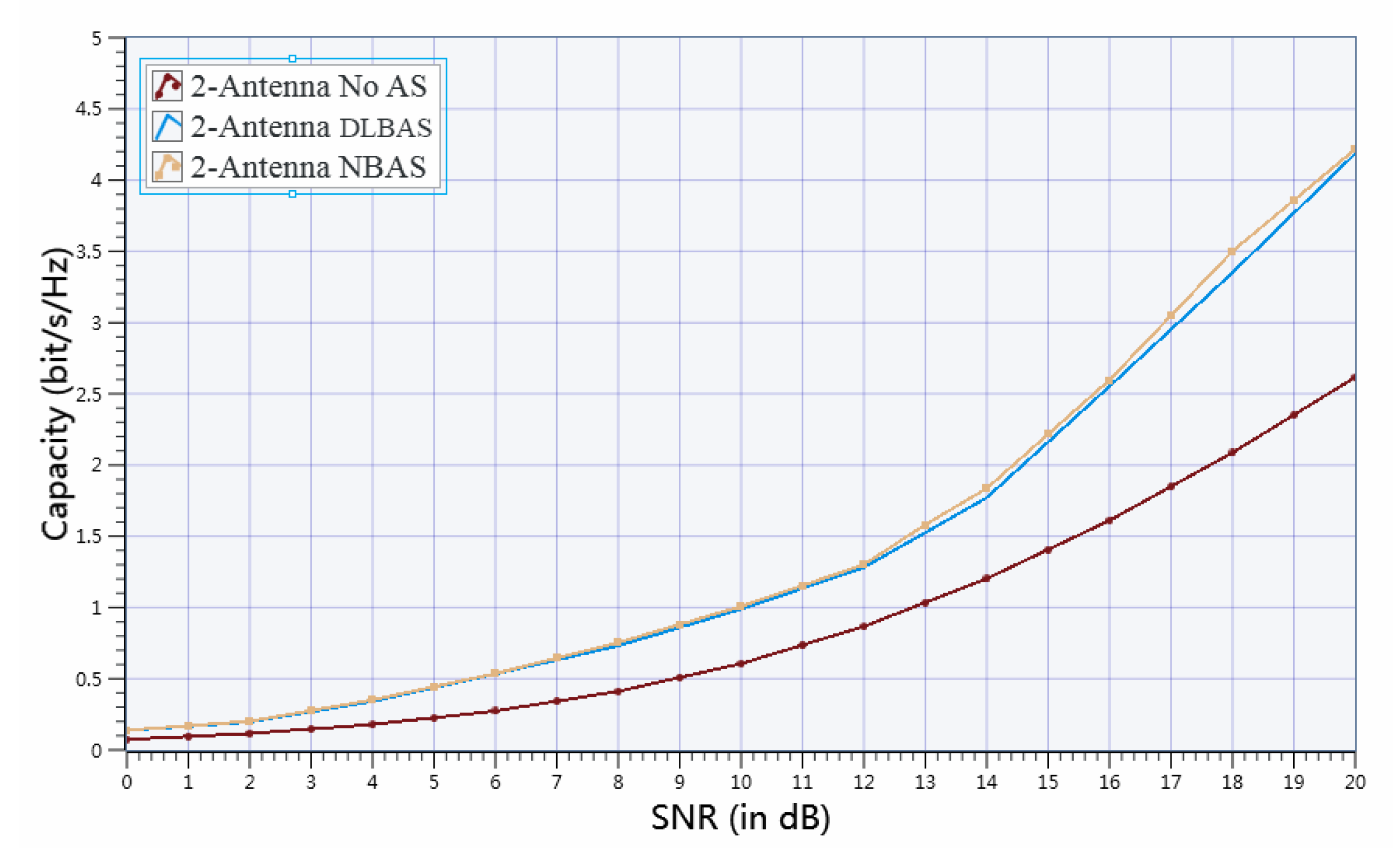
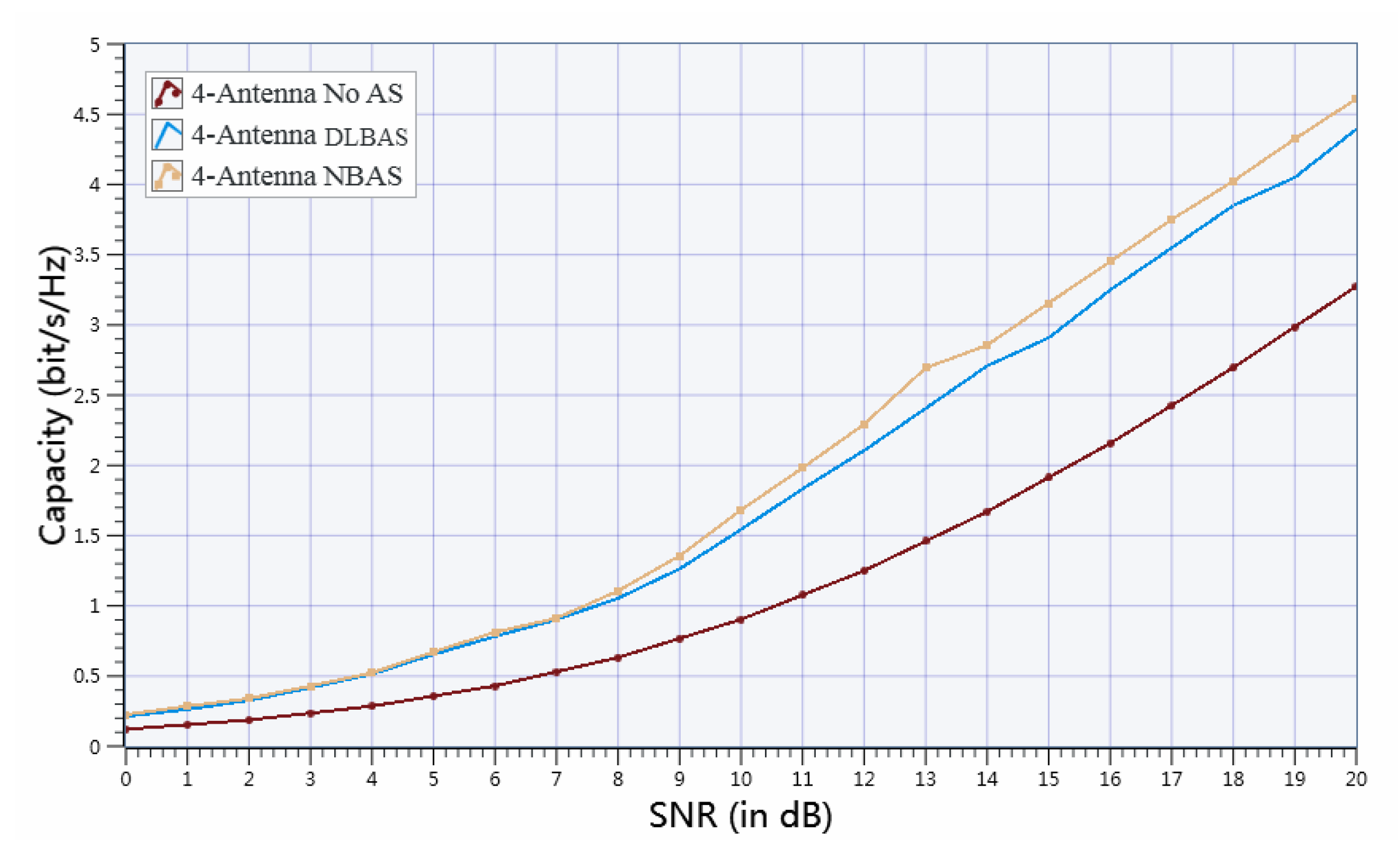
| Variable Name | Type |
|---|---|
| IFCALCULATE | boolean |
| ISRESULT | boolean |
| Decision Result | integer |
Publisher’s Note: MDPI stays neutral with regard to jurisdictional claims in published maps and institutional affiliations. |
© 2020 by the authors. Licensee MDPI, Basel, Switzerland. This article is an open access article distributed under the terms and conditions of the Creative Commons Attribution (CC BY) license (http://creativecommons.org/licenses/by/4.0/).
Share and Cite
Zhong, S.; Feng, H.; Zhang, P.; Xu, J.; Luo, H.; Zhang, J.; Yuan, T.; Huang, L. Deep Learning Based Antenna Selection for MIMO SDR System. Sensors 2020, 20, 6987. https://doi.org/10.3390/s20236987
Zhong S, Feng H, Zhang P, Xu J, Luo H, Zhang J, Yuan T, Huang L. Deep Learning Based Antenna Selection for MIMO SDR System. Sensors. 2020; 20(23):6987. https://doi.org/10.3390/s20236987
Chicago/Turabian StyleZhong, Shida, Haogang Feng, Peichang Zhang, Jiajun Xu, Huancong Luo, Jihong Zhang, Tao Yuan, and Lei Huang. 2020. "Deep Learning Based Antenna Selection for MIMO SDR System" Sensors 20, no. 23: 6987. https://doi.org/10.3390/s20236987
APA StyleZhong, S., Feng, H., Zhang, P., Xu, J., Luo, H., Zhang, J., Yuan, T., & Huang, L. (2020). Deep Learning Based Antenna Selection for MIMO SDR System. Sensors, 20(23), 6987. https://doi.org/10.3390/s20236987







